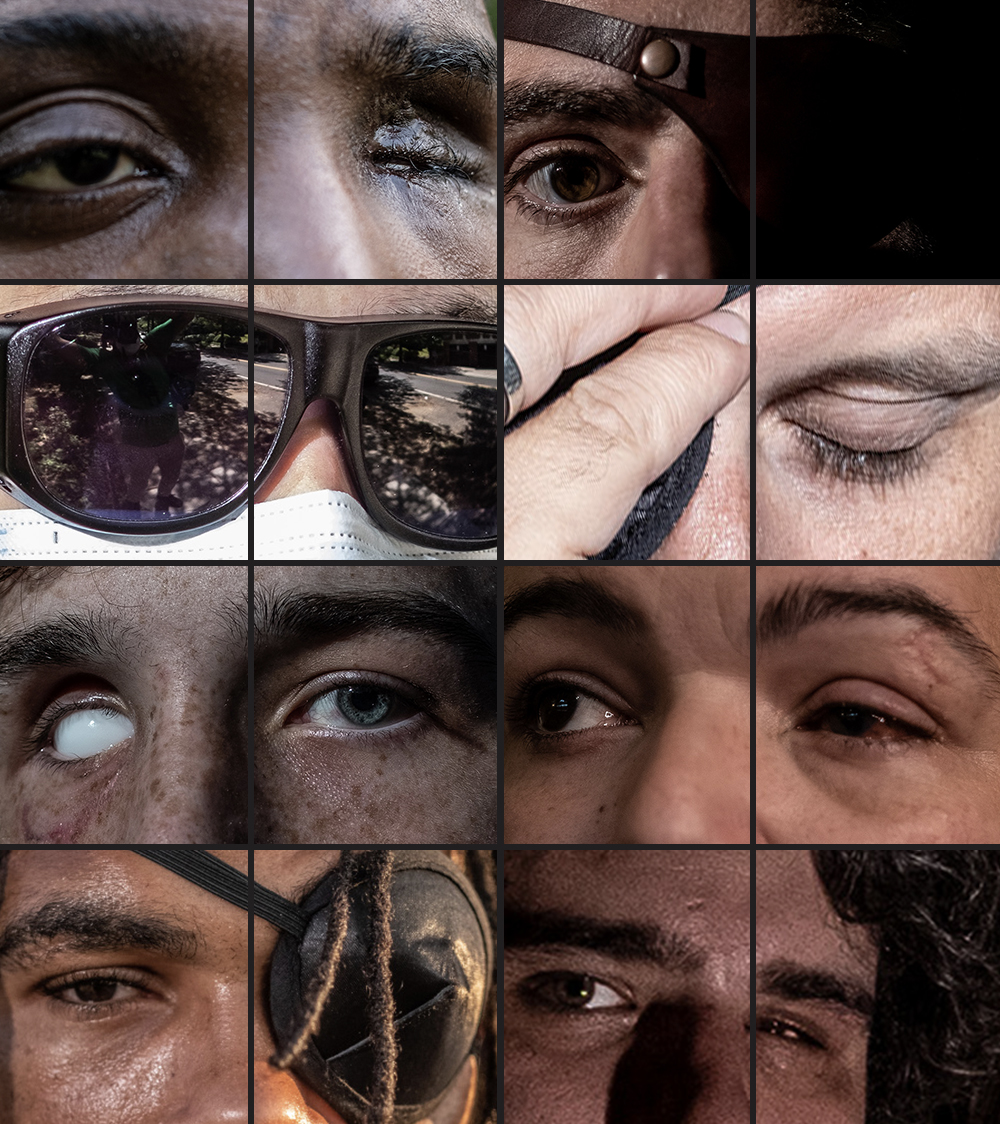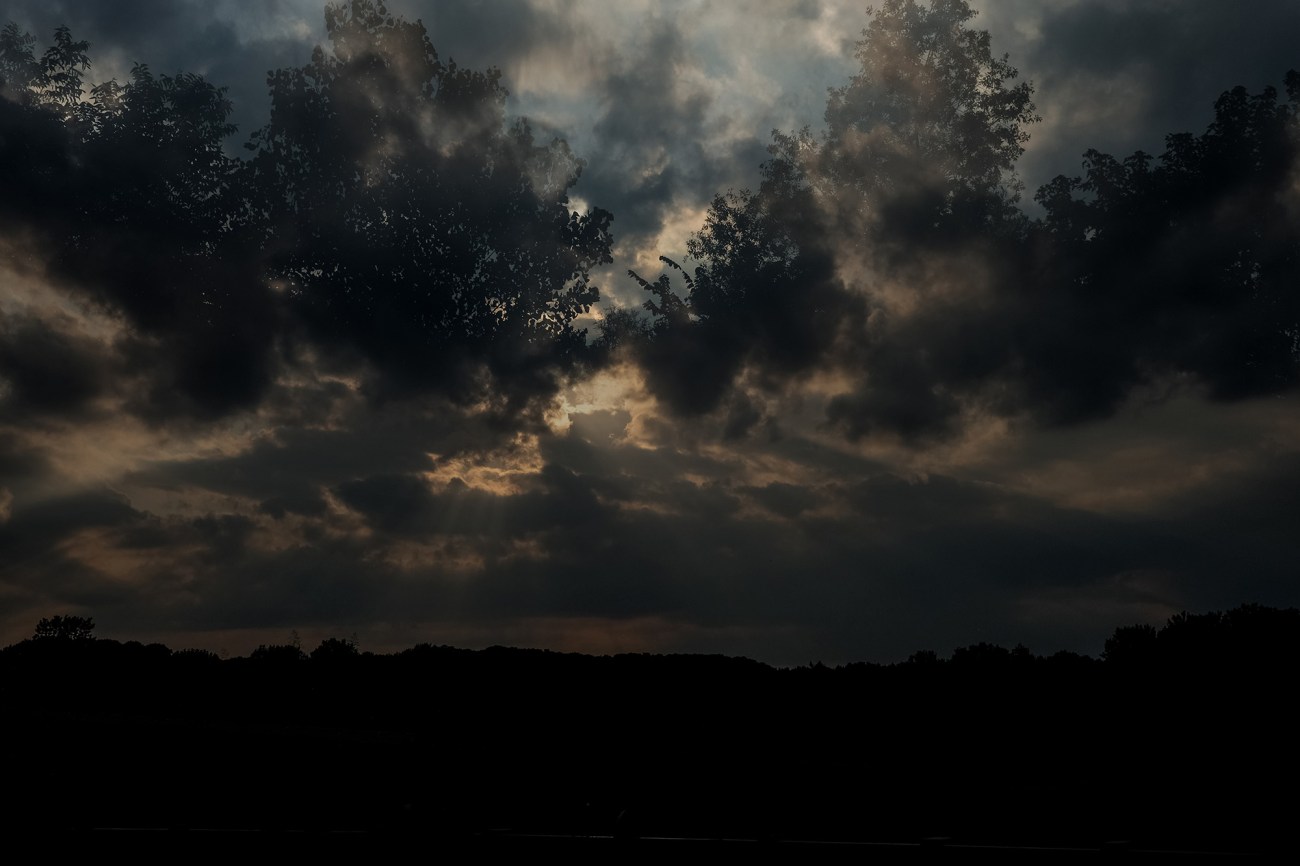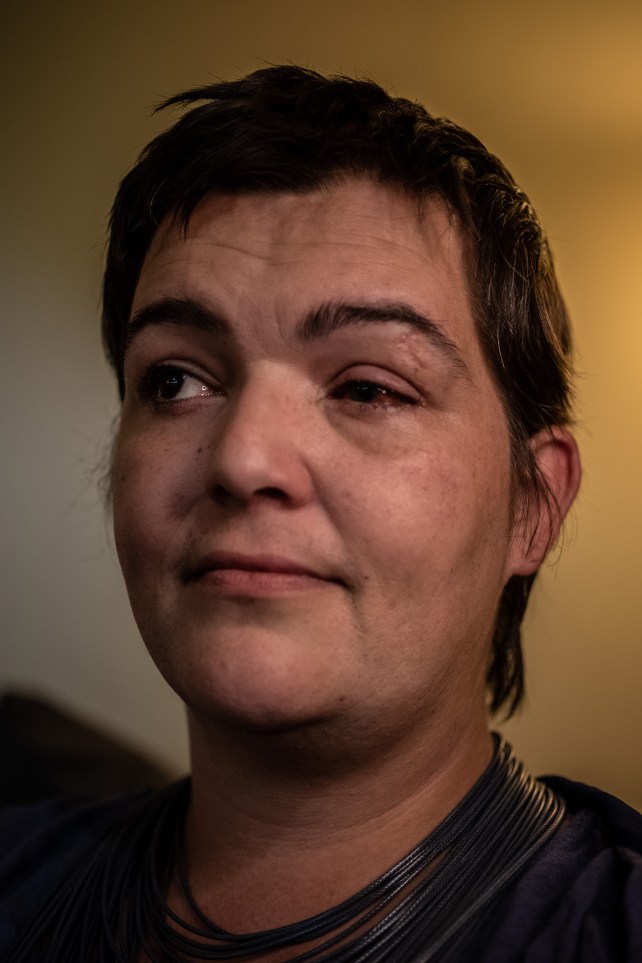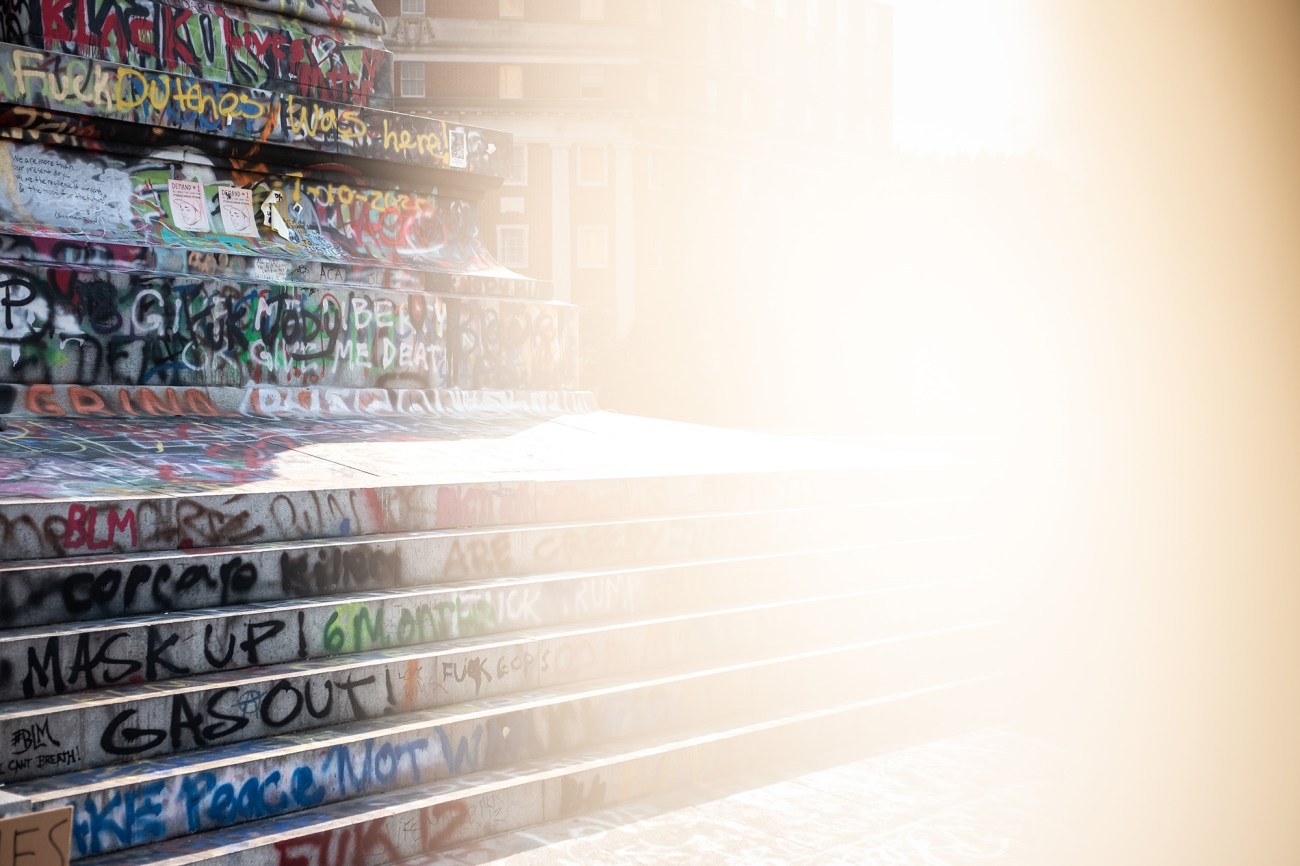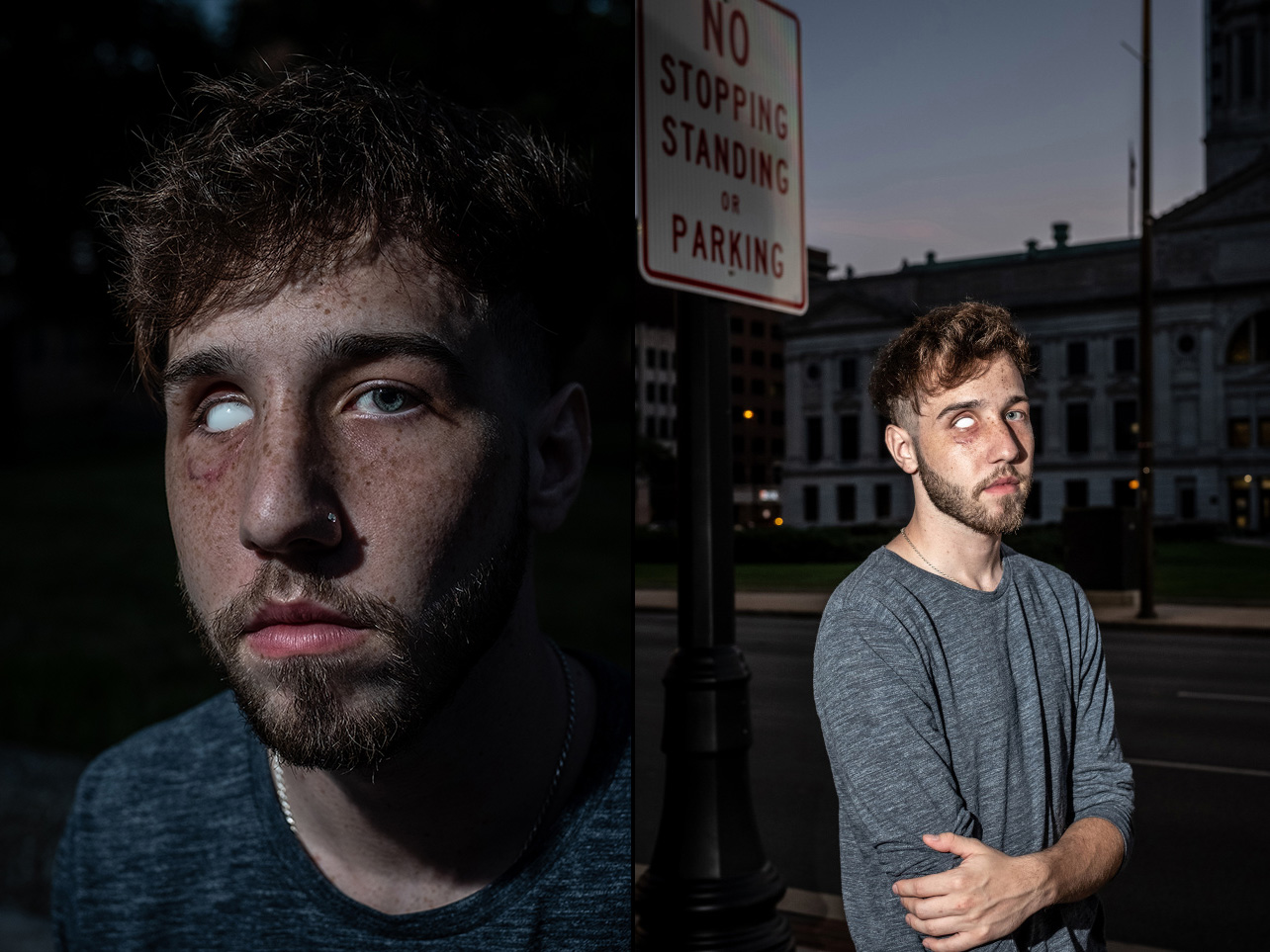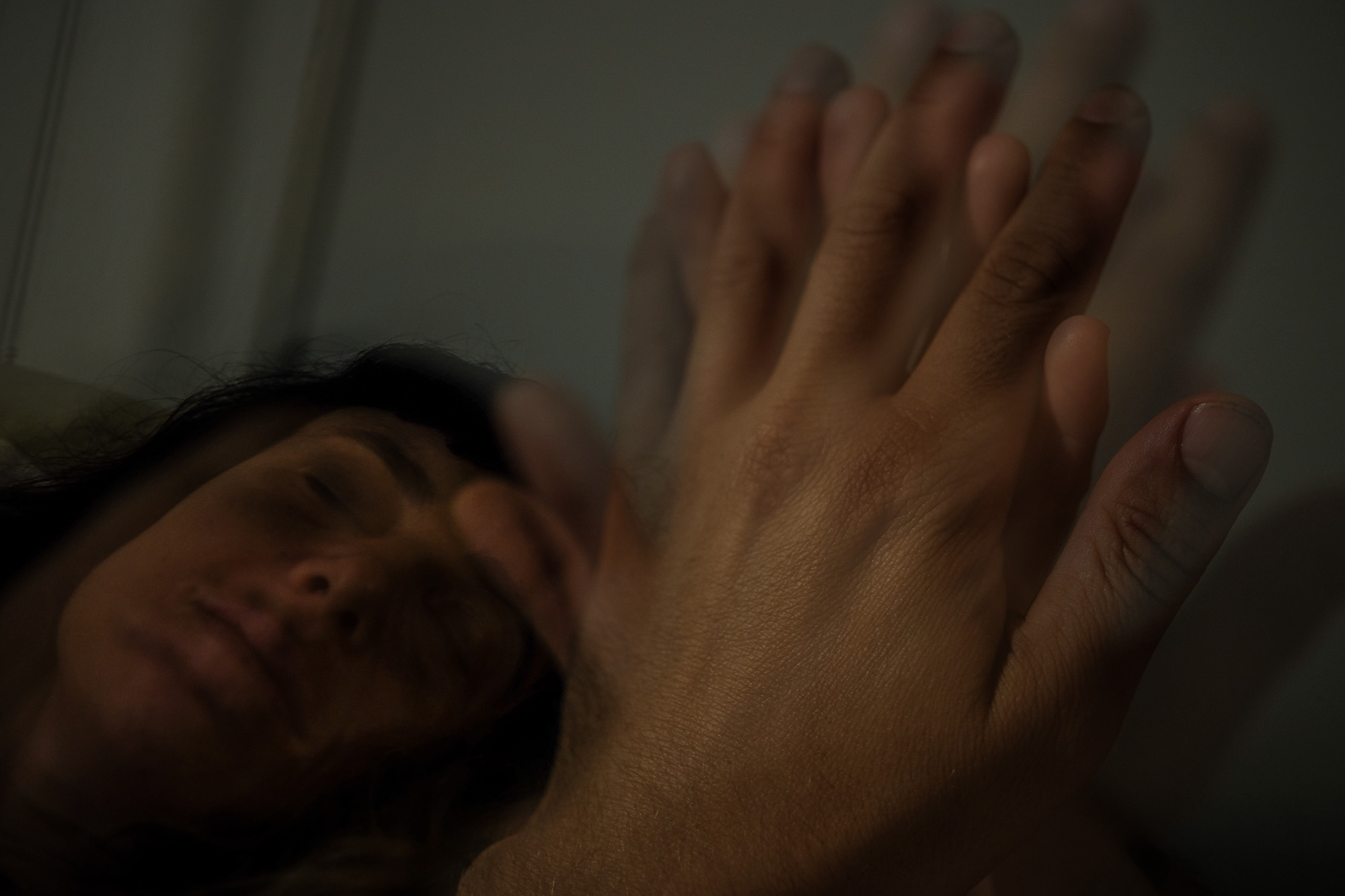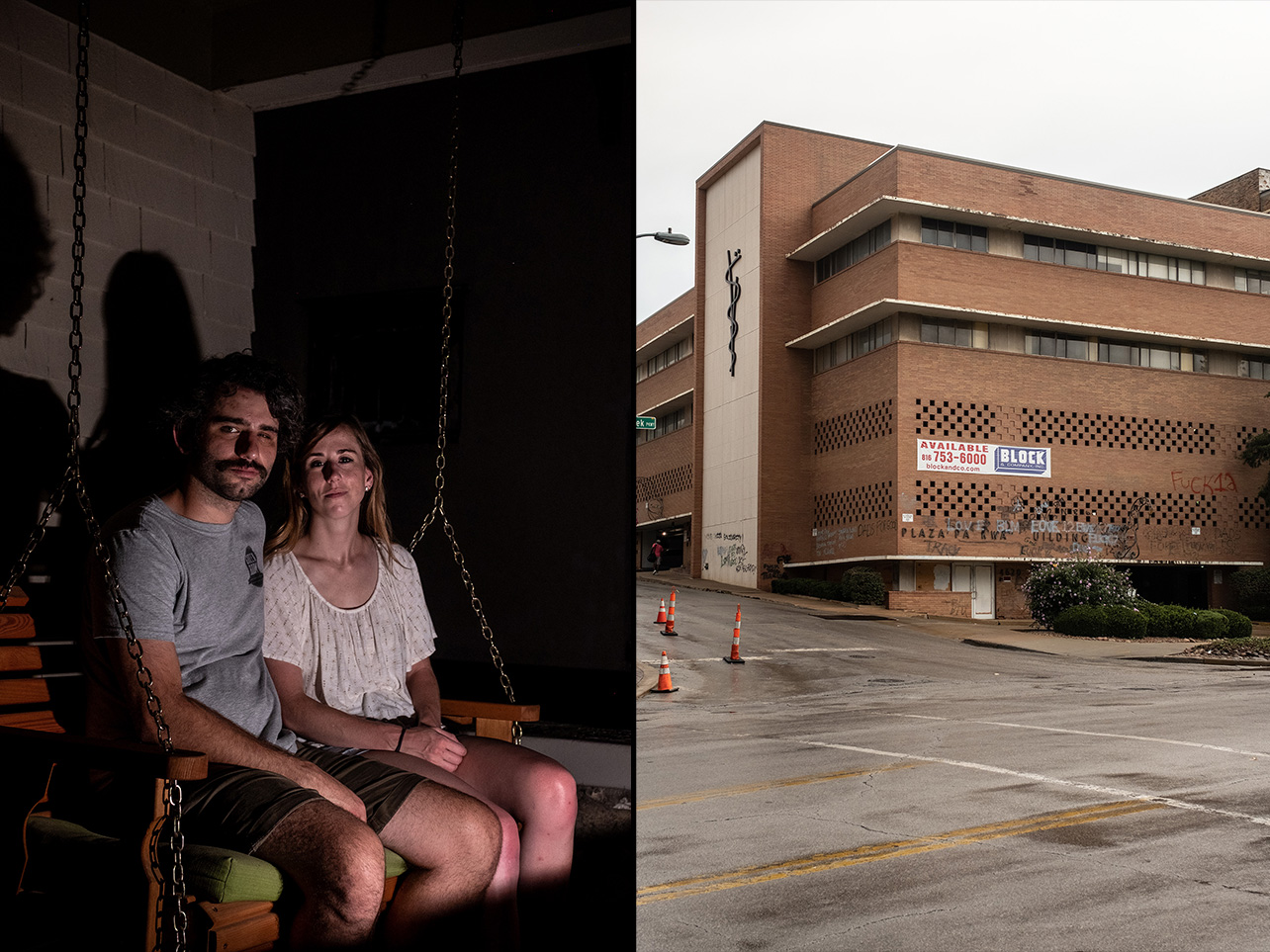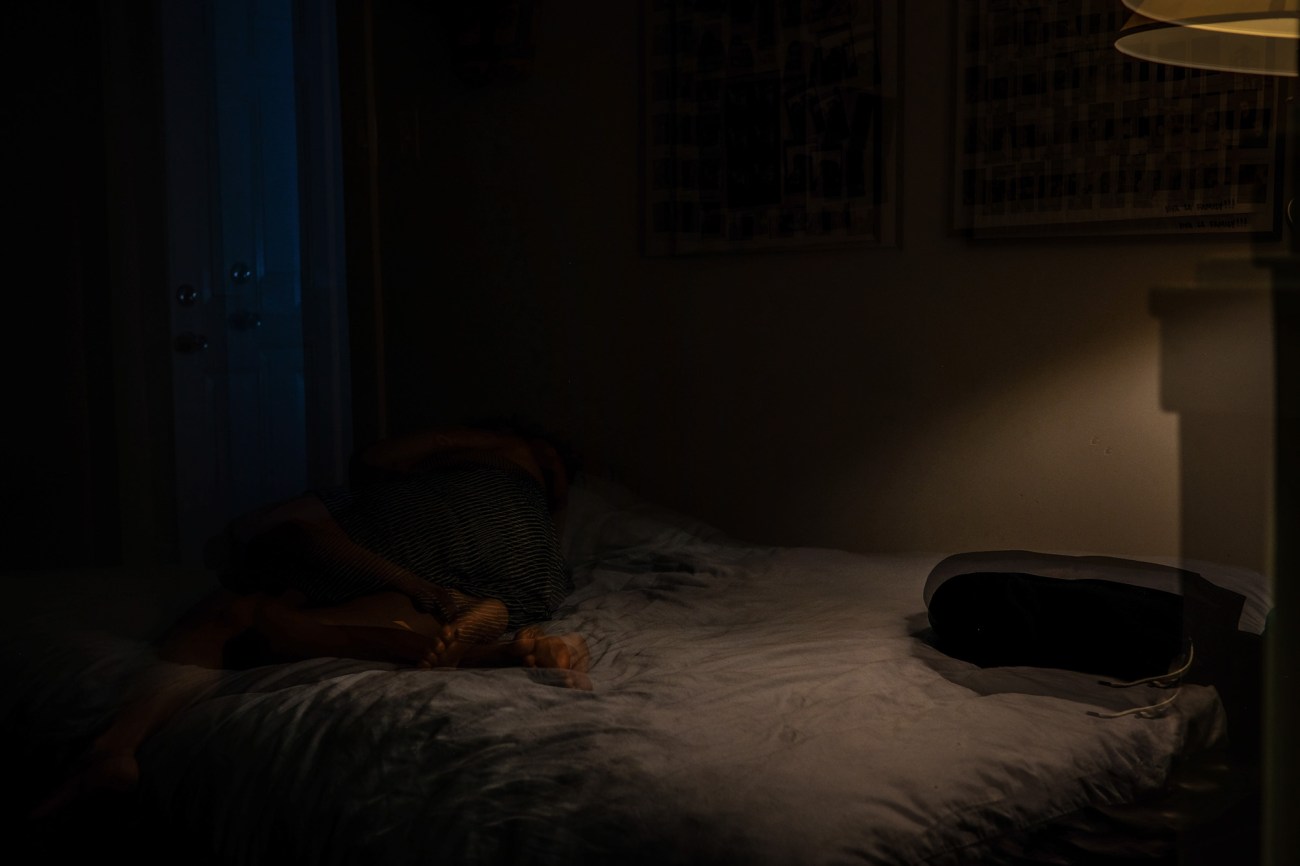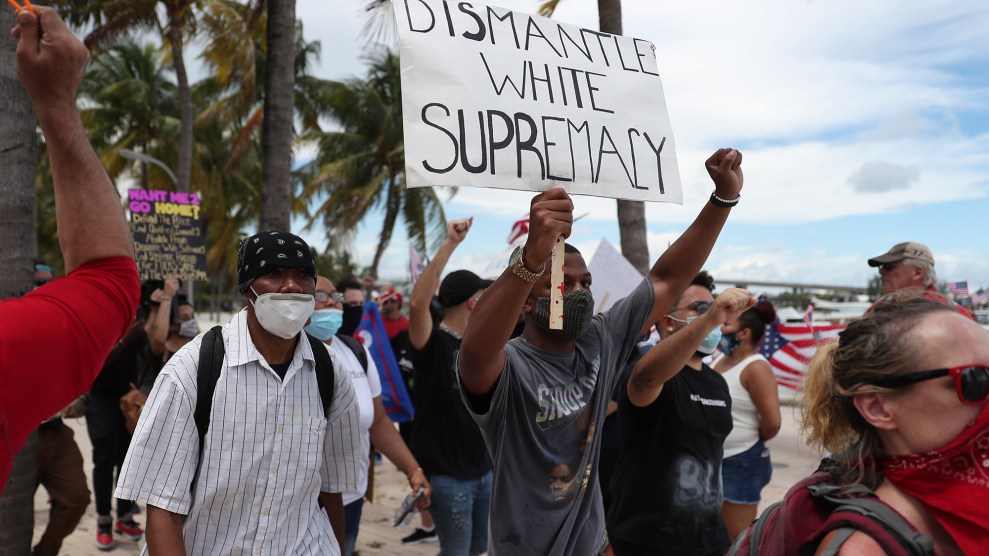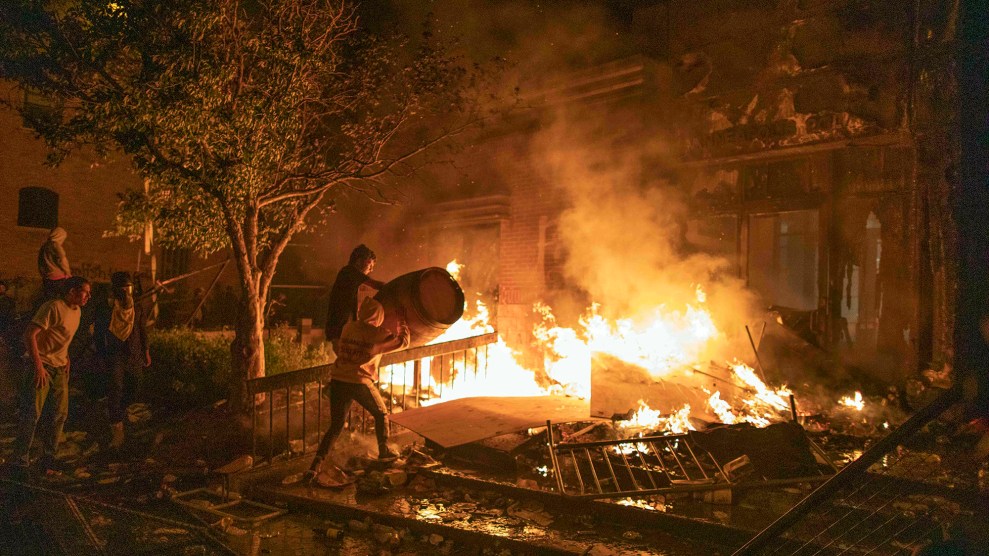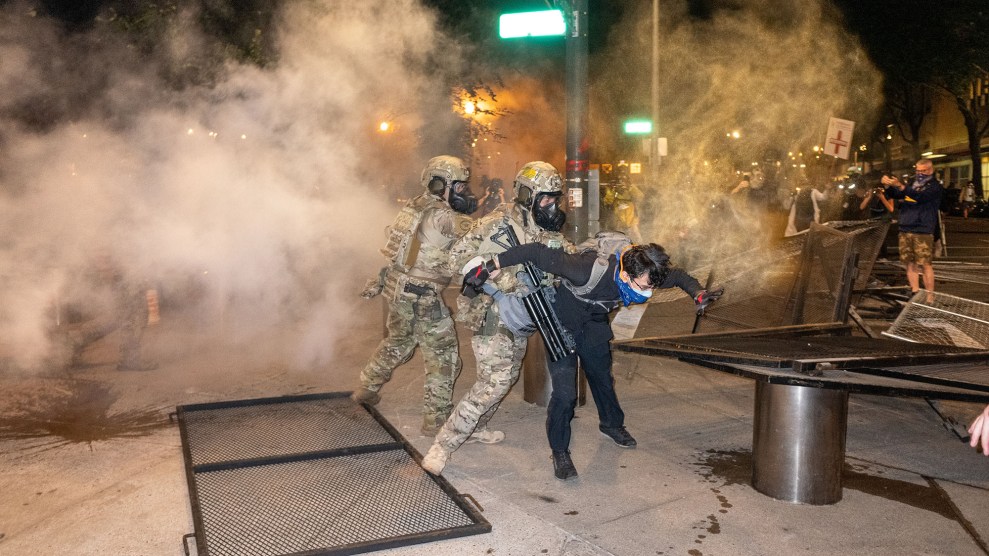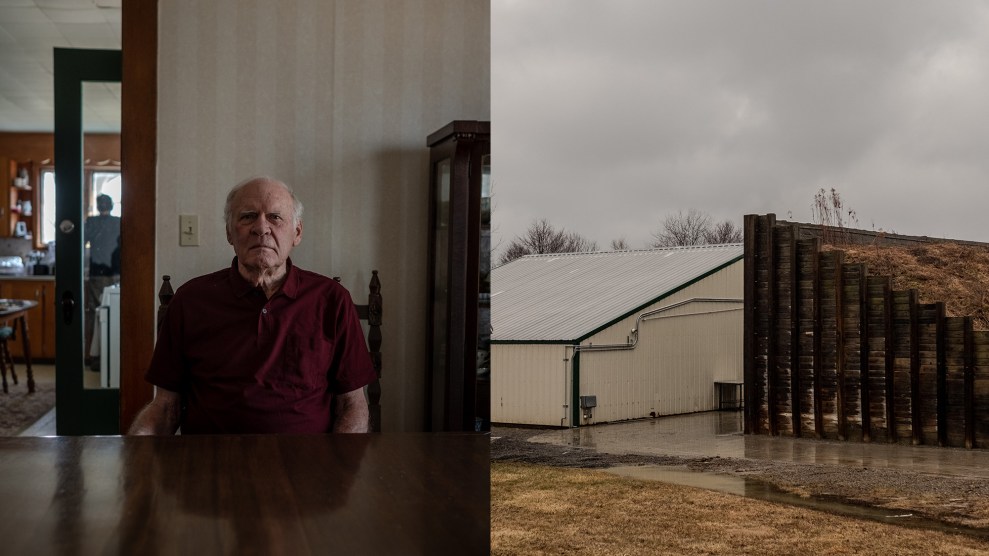It’s been a year since I was shot in the face with a tear gas canister. I remember hearing the shot. When I close my eyes I can still see the spinning aluminum canister flying toward me. Like ripples in a puddle the impact rolled through my eye, instantaneously detaching my retina. It was the eye I used to create, to document, to share—a photographer’s eye—but now all I could see through it were dancing shards of light on a background of emptiness.
I was near Lafayette Square in Washington, DC, photographing the protests that had erupted in the aftermath of the killing of George Floyd. But my mind immediately went to Chile, to the work I had done there in 2019, to the dozens of eyes I saw destroyed during protests in that country, and others. In that moment I knew exactly what my injury could mean.
By September 2020 at least 23 people had been blinded or partially blinded by “less lethal” munitions used by the police to disperse protests across the country. Blinding by cop, largely an international phenomenon, had arrived in force in the United States. While calls for bans on these weapons have led to limited prohibitions of their use, most police departments continue to see “less lethal” weapons as legitimate tools for crowd control.
It’s been a year since my injury, and I’ve begun to accept that the damage to my eye is permanent. I wear eyeglasses now to help focus the limited vision in my bad eye and realign the sight of my good eye. When the sun is low I use an eye patch to reduce the glare. On a good day I can almost forget I was shot. The little vision I’ve recovered in the damaged eye is enough to give me limited depth perception. On a bad day, splitting eye aches leave me effectively bedridden. There is fear I’ll develop glaucoma and cataracts, and a blood shot eye is a constant.
As part of my own recovery I’ve been meeting, interviewing, and photographing the dozens of others—many of them fellow photographers—who’ve unwillingly joined what we’ve taken to calling the Shot in the Eye Squad. Last fall I created a chat on a secure messaging platform where everyone could meet, a sort of informal space of solidarity that has grown into something more organized. The group is now thinking about ways to leverage the shared trauma of its members to advocate for reform. Some people have been talking with members of Congress about legislation that would target the production and use of less-lethals, and we’ve been networking with other victims’ rights groups.
My own photography has changed as well. Unable to use my right eye, I’ve been forced to use the left. My work is more deliberate and composed now, and I’m finding new ways of expressing myself. For this project, I wanted to use photography to explore what “less lethal” really means and to re-create the way our vision has changed in the past year—both figuratively and literally.
Linda Tirado, 39, Nashville, Tennessee
The photojournalist was hit during a Minneapolis protest. “I’m an uninsured American facing a ruinous amount of medical bills,” says Tirado, who in the aftermath of her maiming became the face of “less lethal” police violence. Even after two surgeries, Tirado still can’t see out of her left eye. She is back to taking photographs, though. “I have found the camera to be an adaptive device,” she says. The viewfinder captures “what I used to see with two eyes. It’s actually been really soothing.”
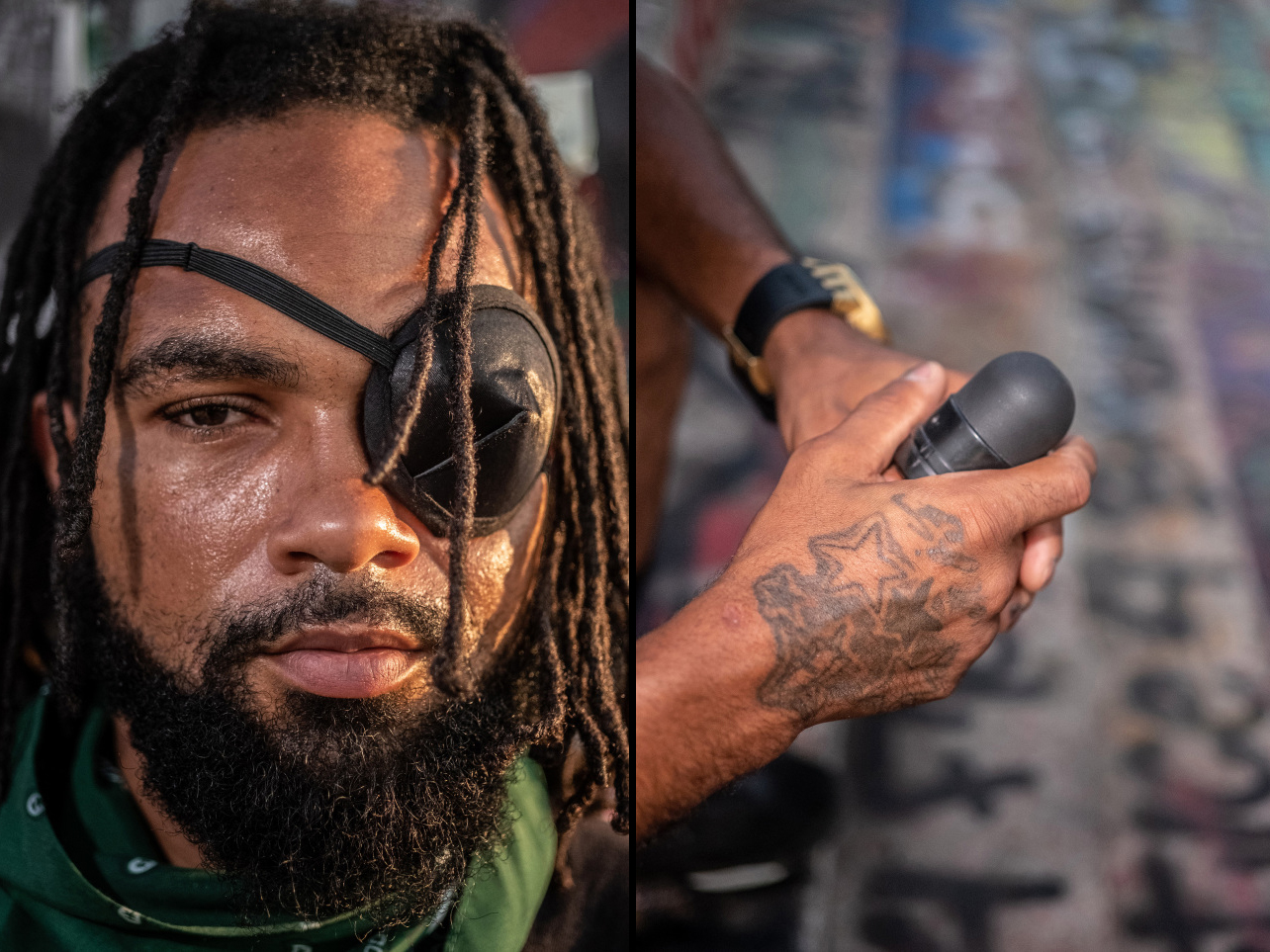
Left: Frank Hunt. Right: Hunt holding a foam round similar to the one that took his sight in the left eye.
Frank Hunt, 31, Richmond, Virginia
“I don’t have a doubt in my mind that they tried to kill me,” says Hunt, who was struck by a foam round. For a time, all he could see out of his left eye was silhouettes; lacking insurance he did not seek any additional treatment. His vision has improved, but he can’t see well at night, and the sun bothers his eye. “I still wear my patch when it’s too bright out,” he says, “but I try to stay away from the patch. It makes me noticeable, and I hate standing out.” He’s sought out lawyers, but he says he doesn’t care about the money. “It can’t take away the PTSD, can’t take away the long sleepless nights, can’t take away the insomnia, can’t take away the paranoia, can’t take away the ‘fuck you’s—can’t take away none of that shit.”
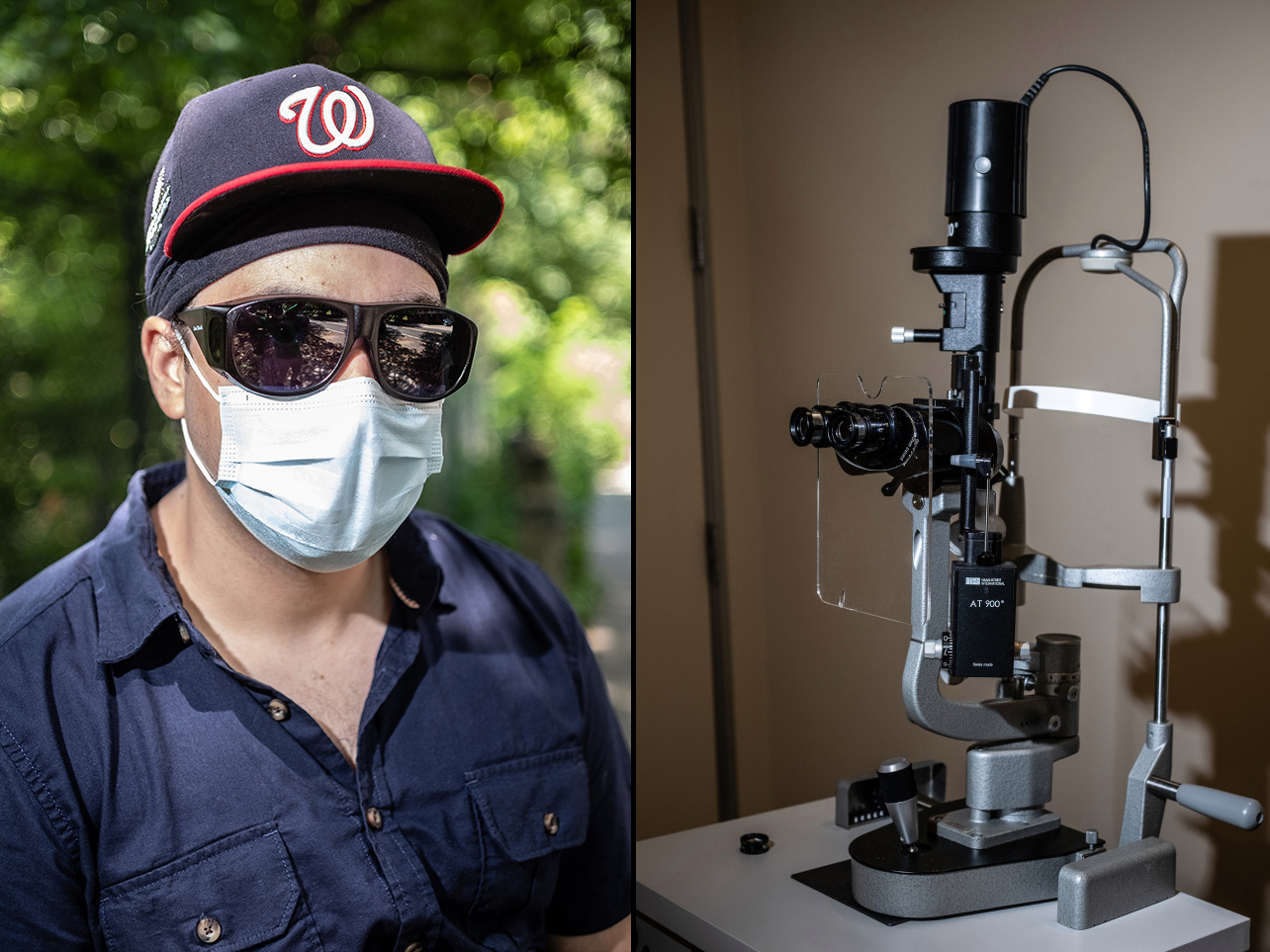
Left: Matthew Leo Cima. Right: A machine used to examine retinas.
Matthew Leo Cima, 34, Washington, DC
“I remember hearing the crack of my skull, then feeling ice cold, smelling blood, and then a bright light like the negative of a Rorschach.” Cima was shot in the left eye with a “less lethal” round while protesting outside the White House in Lafayette Square. After four surgeries his vision was partially restored. He says he has 20/200 vision “in the areas where I am not light blind.”
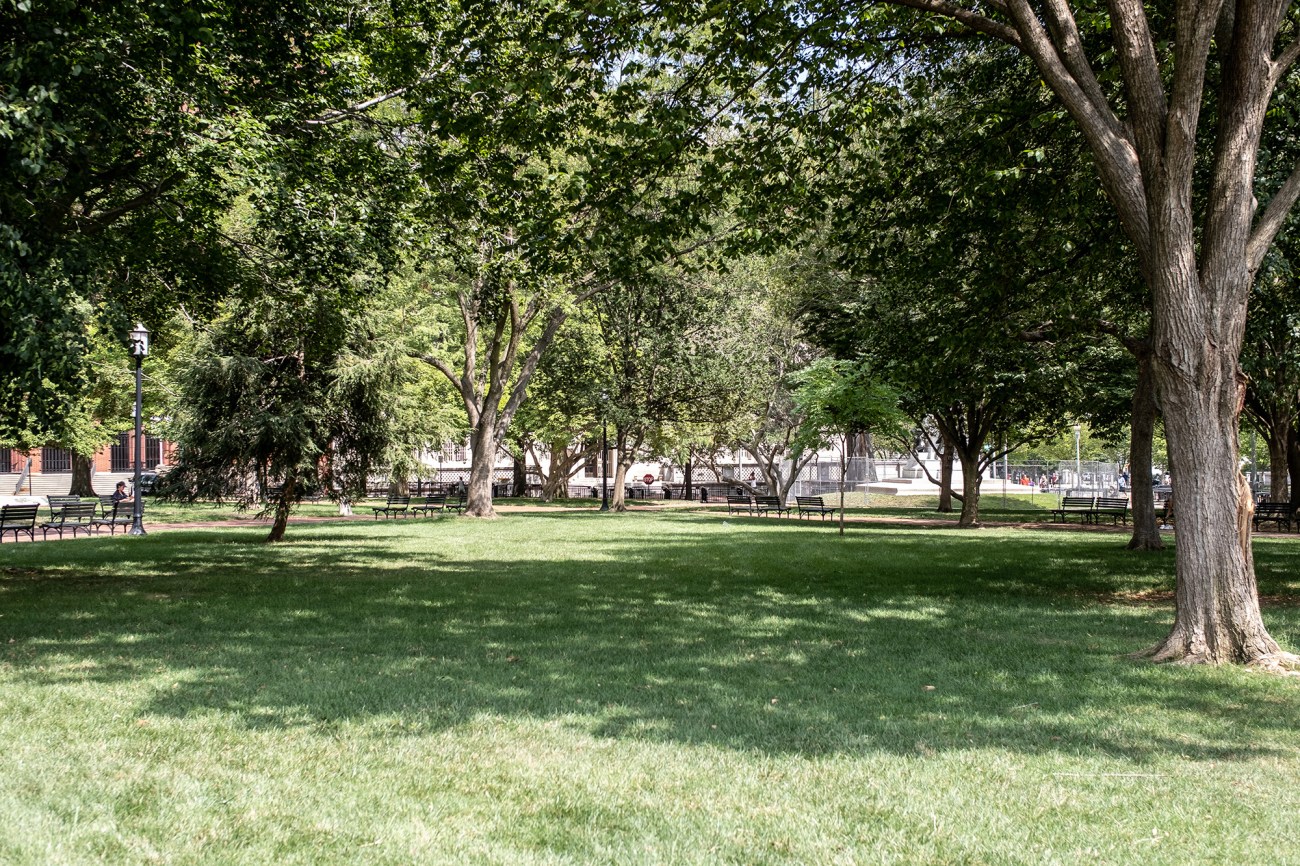
Lafayette Square, Washington, DC, where Matthew Leo Cima was shot.
Balin Brake, 22, Fort Wayne, Indiana
“It’s the little things: ATMs or having to hand people things.” Brake has a painted prosthetic that matches his other eye, but, he says, “I know my eyes and it’s not my eye. I’d rather just…” I finish his sentence: “Let people see you as you are.” He nods: “Yeah.”
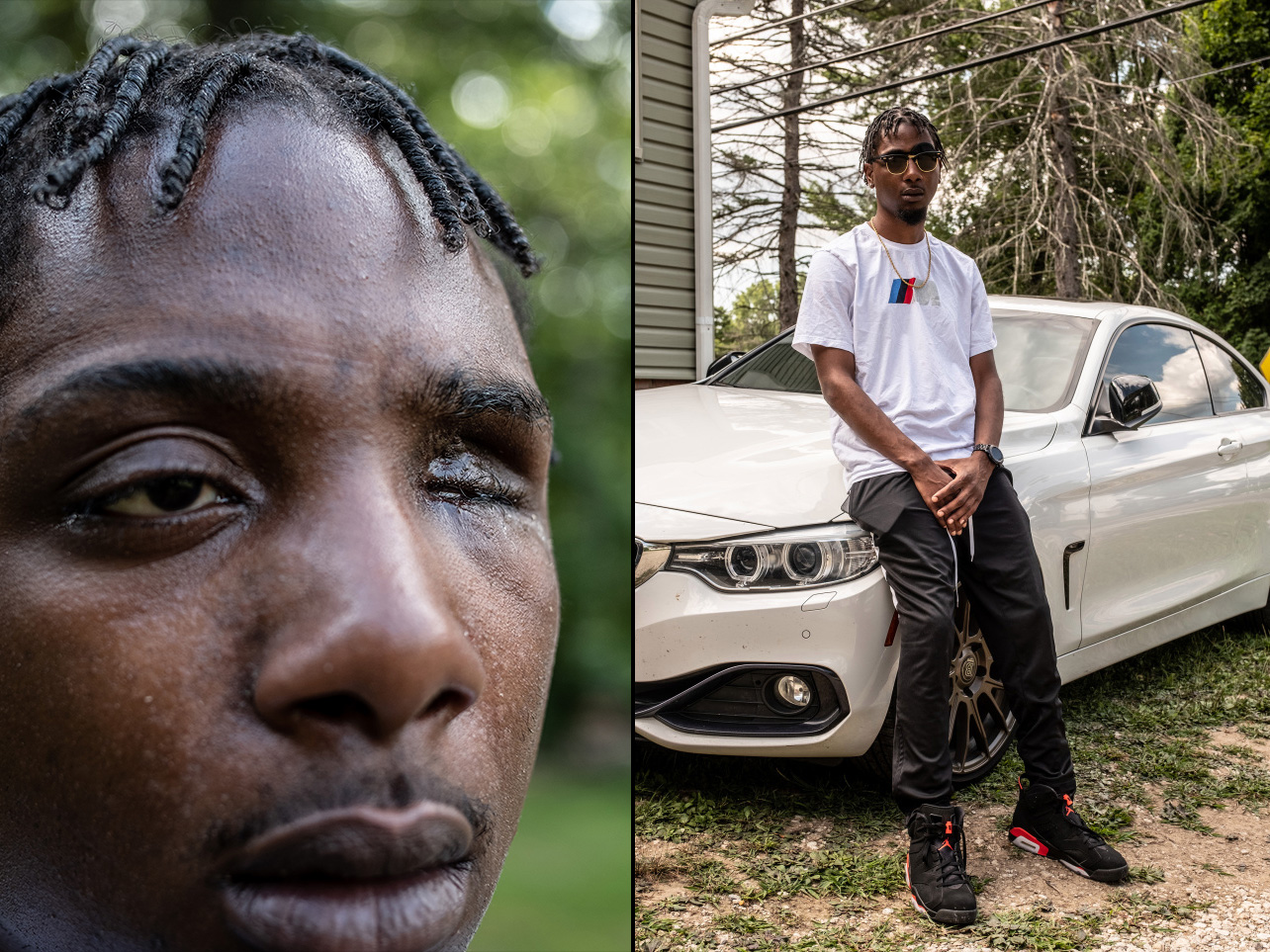
John Sanders
John Sanders, 25, Sandusky, Ohio
A bean bag round left Sanders’ eye hanging out of his head. “It’s ironic as hell that I was protesting something and that same thing happens to me.” In the three months after being shot, he underwent three surgeries: one to stitch up his eye, one to remove the eye and reconstruct the lid, and one to fill in the orbit with fat from other parts of his body. He was also hospitalized for diabetic ketoacidosis, a life-threatening complication of diabetes, which he blames on the heightened stress and depression brought on by the loss of his eye.
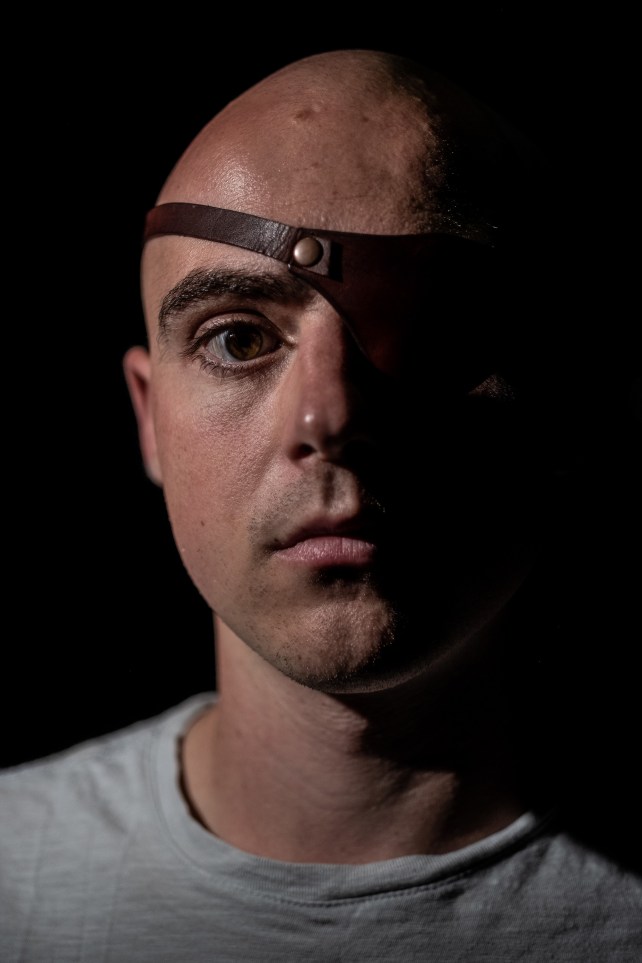
Soren Stevenson
Soren Stevenson, 26, Minneapolis
Having answered the call for white bodies to move to the front of a march, Stevenson was hit by a plastic round fired by police. “I felt my face,” he recalls, “and it was wet and soft where there should have been bone.” He had just started his job search when he was shot; he did not find full-time work until April, nearly a year later. Today he works for the Northcountry Cooperative Foundation, a nonprofit that helps residents of manufactured housing communities buy the land beneath their homes and run the communities as cooperatives.
Sean Stearns, 33, Kansas City
“I don’t want to be quiet and stay at home, and pretend it’s not happening,” says Stearns, when I ask him why he went out to the protests last May. Sean was helping his girlfriend with concussion when he was shot in the left eye with a rubber bullet or bean bag round. He’s blind in his left eye, and debating with his doctors whether or not they should remove the eye permanently to preserve his good one. For the moment Sean wants to keep it.
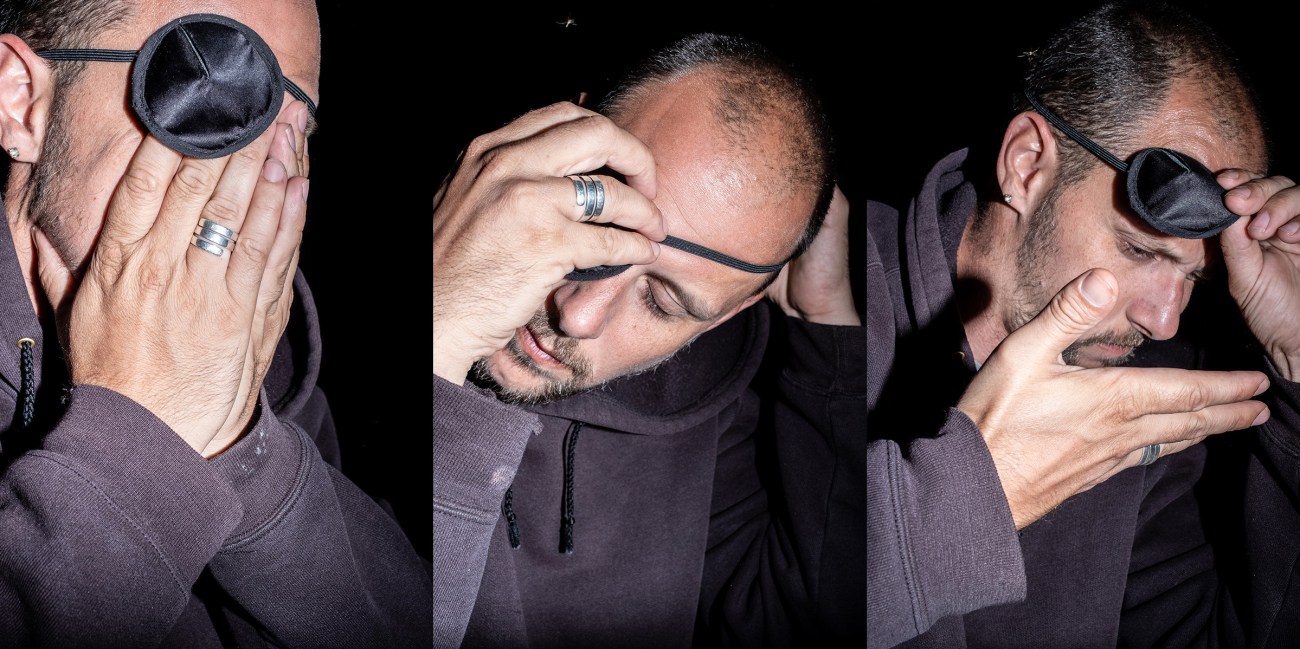
Me, 40, Richmond, Virginia
The shot sent a shockwave through my eye. My retina was partially detached, and there was severe bleeding in the back of my eye. My sight will never be the same.
This reporting was supported by the Pulitzer Center.
